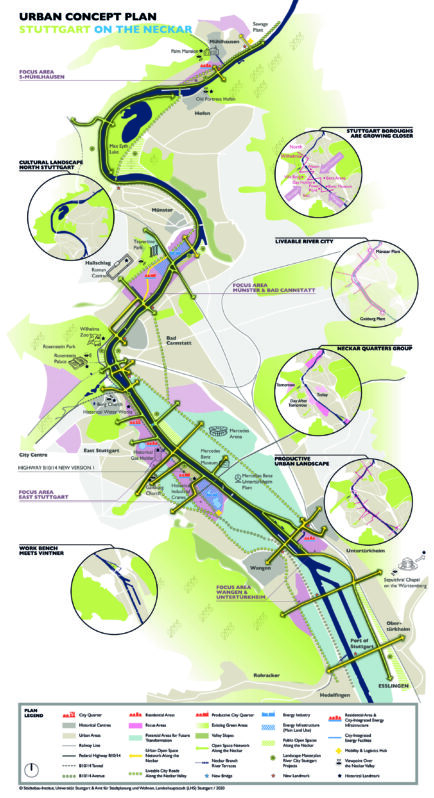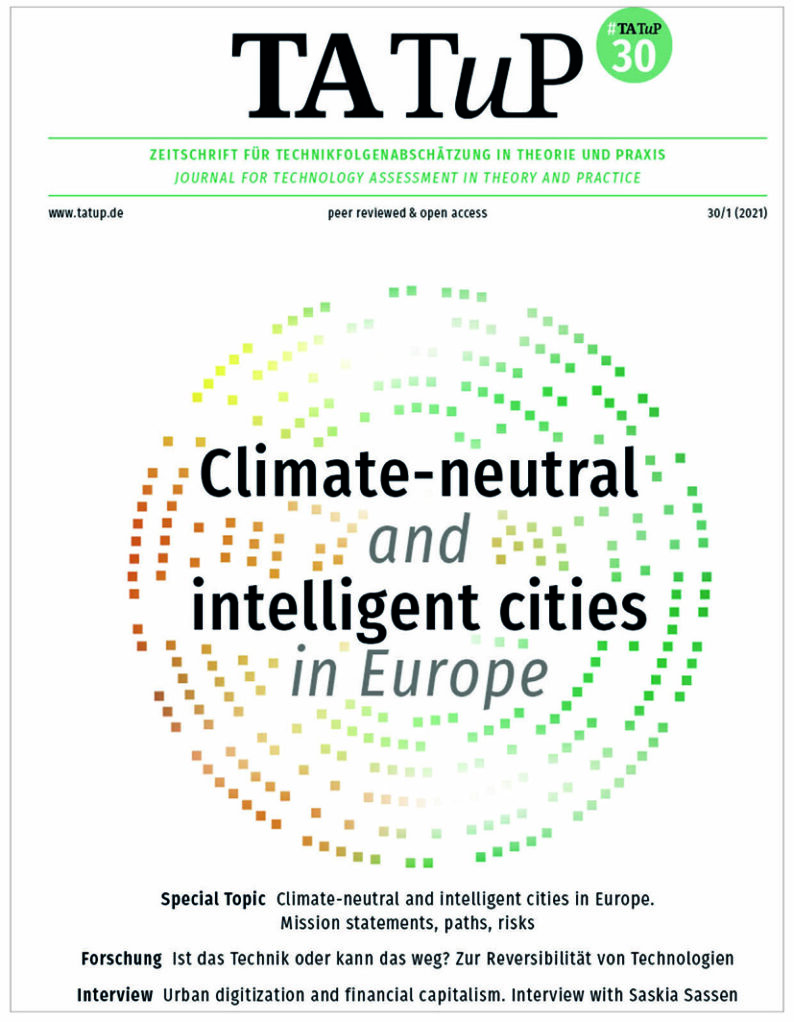Scenario-based Mission Statements.
Promoting sustainable urban development in the context of the energy transition
by Raphael Dietz, Dan Teodorovici, Sigrid Busch, Markus Blesl, Michael Ruddat and Yvonne Zahumensky.
Published in:
TATup, Vol. 30, No. 1 (Karlsruhe 2021). Special Topic: Climate-neutral and intelligent cities in Europe. Mission statements, paths, risks, pp. 29-35.
https://www.tatup.de/index.php/tatup
This paper is an outcome of the inter- and transdisciplinary research project WECHSEL (2017-2019), that brought together departments of the University of Stuttgart and of the City of Stuttgart. WECHSEL responded to the vision of transforming Stuttgart into a river city, in combination with the challenges that arise from climate change and following mitigation strategies including the “Energiewende”.
In Stuttgart this has led to the transformation of large-scale energy infrastructure in the Neckar River Valley. This valley presents itself as a fragmented townscape: it is home to sub-urbanized villages, world class industry, energy and transport infrastructure, but offers very limited access to the river. The inter- and transdisciplinary research project WECHSEL investigated the opportunities arising from the transformation of energy infrastructures to bring Stuttgart closer to the river and to promote a sustainable and livable urban development with new neighborhoods and open spaces along the Neckar. Considering the amalgam of grown structures and their disparate urban inertial forces, it is clear that such a transformation would become a true Herculean task. Therefore, WECHSEL coupled research, teaching, participation and communal policies of the City of Stuttgart. In an integrative approach, the energy sectors of electricity, heat and mobility were combined with urban planning to elaborate a vision of how Stuttgart can become a sustainable river city.
The paper analyses the urban inertial forces that counteract the transformation of energy infrastructure areas in the context of the energy transition. In order to overcome these forces, a scenario-based mission statement was developed in which spatial scenarios were derived from energy scenarios and finally summarized in a concept plan for the Neckar Valley (see image below). The mission statement was developed following an analytical-deliberative and transdisciplinary approach. The approach to mission statement development presented here can respond flexibly to changing framework conditions and thus serve as a model for other cities with large-scale energy infrastructures in transition.

Project Partners
University of Stuttgart: Institute of Energy Economics and Rational Energy Use & Department of International Urbanism, Institute of Urban Planning
City of Stuttgart: Department of Housing and Urban Planning, Division of Urban Development & Department of Environmental Protection
Funding
The project was funded by the German Federal Ministry of Education and Research (BMBF).
TATup (Zeitschrift für Technologiefolgenabschätzung in Theorie und Praxis / Journal for Technology Assessment in Theory and Practice)
TATup is a peer-reviewed open access interdisciplinary scientific journal founded in 1992. TATuP is owned, managed, and edited by the Institute for Technology Assessment and Systems Analysis (ITAS), the world’s largest institution for technology assessment located at the Karlsruhe Institute of Technology (KIT). For further information please see:
https://www.tatup.de/index.php/tatup/about



